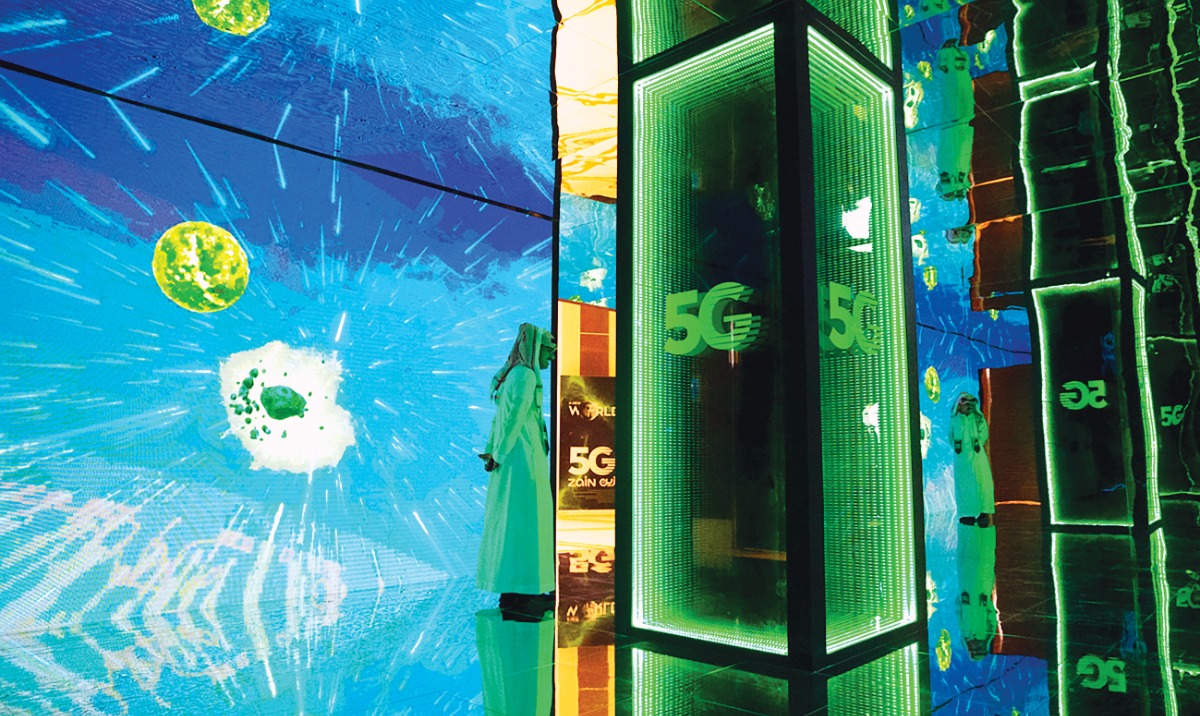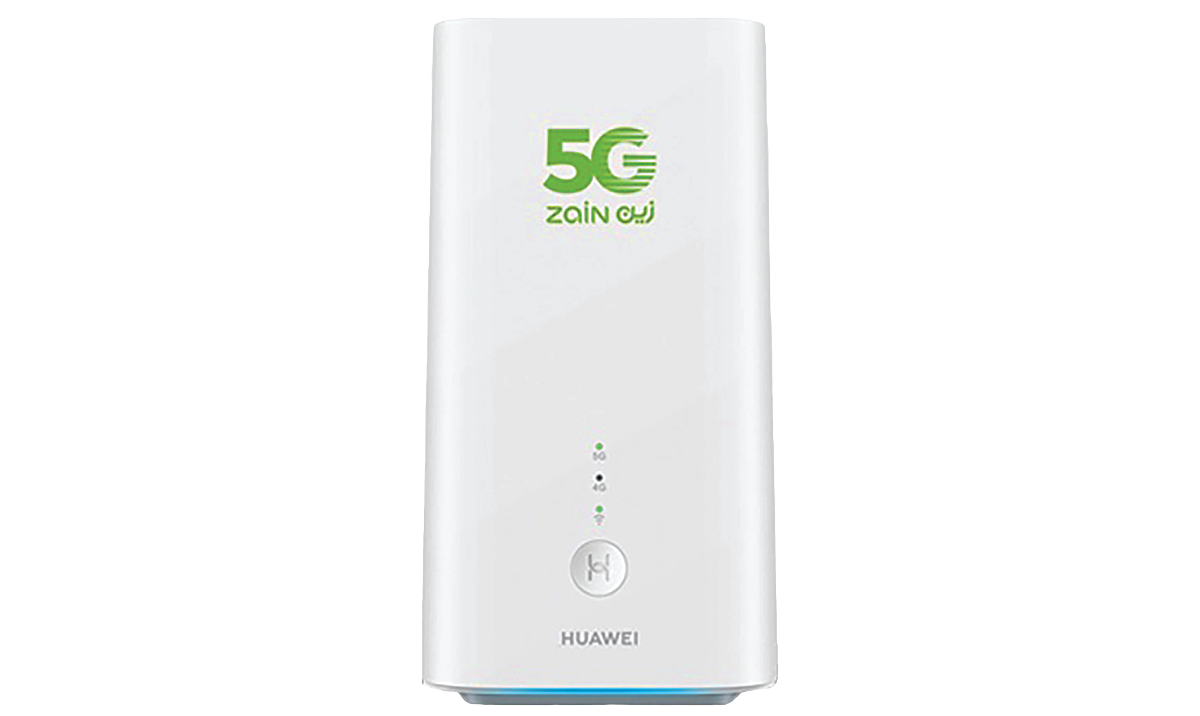RIYADH: Telecom major Zain was one of the few global players to spot the fifth-generation mobile opportunity early on and has achieved considerable success since the launch of 5G services in Saudi Arabia in 2019.
Now, the company is ready to take the next giant leap with 5.5G, the carrier aggregation over 5G, disclosed the marketing strategy and analytics general manager of Zain Saudi Arabia.
In an exclusive interview with Arab News, Hamzeh Saud Al-Draaee said, “5.5G is already in our pipeline, and we have seen good results. We are also well prepared to launch the 5G standalone, but we are waiting for the market to be ready.”
Even though Al-Draaee did not comment on the investment into developing 5.5G, he said the company had taken every care to ensure a premium customer experience.
“We are keen to give premium experience and to deliver whatever was needed because our investments are not only to get returns but to be a leader,” he explained.
Ahead of the curve
The telecom operator’s profit for the first half of 2022 increased 157 percent to SR214 million ($57 million) between January and June this year from SR83 million in the same period a year earlier on the back of higher revenue, according to a filing to the Saudi Exchange.
The company’s revenue rose from SR3.8 billion to SR4.4 billion, driven by the growth in the business-to-business, fifth-generation and other revenue streams in addition to a post-pandemic return of international visitors.
Talking about Zain’s success since the launch of 5G services in 2019, the general manager said many factors had played a part in its accomplishments in the last three years.
“I would start with the foresight of our leadership in spotting the ability of 5G to create a massive impact in the years to come,” Al-Draaee said.
Being an operator before the 5G wave, the company could not well entrench itself in growth opportunities such as home broadband and enterprise connectivity. However, Zain looked at the larger picture and spotted 5G’s inherent capabilities and executed the 5G strategy.

A faster rollout of 5G services helped Zain get recognized by its customers and regulator and, in turn, helped brand Zain stand out as a reliable network for tomorrow’s services.
“It all changed after the launch of 5G. Zain became a key player in the home broadband and enterprise connectivity markets. We are now a leading player in these markets in some areas,” he added.
Having pulled out all stops when it came to offering the 5G experience, it is no coincidence that in the last three years, Zain has managed to cover more than 51 cities in the Kingdom.
“Now, we are continuing to expand in terms of numbers, active subscribers that are enjoying the 5G service, and we are continuing to expand,” said Al-Draaee.
“We believe that we shouldn’t stop. If you are a leader, you have a responsibility to lead the way and stay ahead,” he added.
So how did a faster rollout of 5G services help Zain? “Our commercial strategy, coupled with an aggressive 5G rollout, gave us an early mover’s advantage. However, it is important to keep innovating to protect the advantage gained,” Al-Draaee said.
He explained that a faster rollout of 5G services helped Zain get recognized by its customers and regulator and, in turn, helped brand Zain stand out as a reliable network for tomorrow’s services.

Zain was the first company to launch a cloud gaming service in the Middle East, providing a low-latency gaming experience to its home broadband users without spending on expensive gaming gadgets.
“Today, our home broadband customers enjoy multiple exclusive content and gaming services. So, in a way, Zain has pushed the envelope further for the whole region at the back of its 5G rollout,” said Al-Draaee.
Adding value to customers
In fact, through global strategic partnerships, the company could take the 5G experience in the Kingdom to a new level, and it completed its partnerships by providing digital infrastructure that obtained the best results.
Earlier this year, the company enhanced its partnership with Nvidia to take GeForce Now cloud gaming services to various other countries in the region. The company will continue to develop new and innovative services in the future and provide great experiences to users. But as they say, the road to success is always under construction and is filled with roadblocks.
“From the start, Zain has been aware of these challenges and has worked continuously with its partners to forecast, identify and mitigate them. As a result, it has impacted our performance as a carrier.”

When asked about the telecom major’s target segment, Al-Draaee quickly responded: “We are targeting the ‘shabab’ or youth segment. Even our portfolio, we call it Shabab. We have Shabab starting from different prices beginning from SR59 ($15.7) until SR399. We know what they are looking for, and we have built products for them.” The company recently launched a customized plan called Shabab Digital, where users can choose data for the internet, social media, calls and messages based on their needs.
Digital transformation
As one of the country’s largest 5G operators, Zain is an active player in the National Transformation Program of Saudi Arabia, driving the digital transformation of industries across the country.
“Zain has been strengthening its cooperation with global technology leaders such as Huawei technologies to focus on digital infrastructure investments to promote economic growth and sustainable development,” said Al-Draaee.
He added: “Zain will be leveraging its 5G standalone network to enable a full suite of new range vertical services for digital industry transformation.”
Regarding digital payments, Al-Draaee said it is part of Zain’s roadmap to have such digital payment strategies in the long run without giving much detail. However, he said the company can either follow what others have or think something out of the box.



















